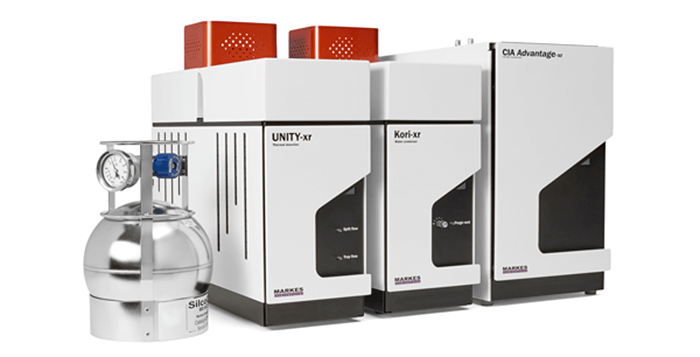Summary
This application note describes cryogen-free sampling and analysis of the 108 analytes of a combined list of PAMS ozone precursors and TO-15 air toxics in high-humidity environments, in compliance with the detection limit and data-quality requirements of Chinese EPA Method HJ 759 and the Chinese Environmental Air Volatile Organic Compound Monitoring Program. The use of Markes’ ground-breaking Dry-Focus3 pre-concentration and water management technology results in excellent chromatographic peak shape at 100% humidity, whilst maintaining sample-to-sample cycle times below 60 minutes. The use of robust, field-proven dual-column/ Deans switch technology in the GC oven allows FID analysis of highly volatile C2 hydrocarbons, with the remaining analytes detected using a single-quadrupole mass spectrometer operating in full-scan mode.

Introduction
Growing concerns over the harmful effects to human health of exposure to low levels of hazardous air pollutants have led to increasingly demanding VOC monitoring programs. Volatile hydrocarbons in urban atmospheres participate in photochemical reactions and are believed to contribute significantly to the formation of ozone and fine particulate (PM 2.5) pollution. These ‘ozone precursors’ (often referred to as ‘PAMs’ in reference to their long-standing inclusion within the US EPA’s Photochemical Assessment Monitoring Scheme) comprise alkanes, alkenes, alkynes and aromatic hydrocarbons in the C2–C12 volatility range. Ozone precursor monitoring is typically achieved using on-line techniques for continuous monitoring or remote canister sampling, but both techniques require water removal and pre-concentration of the sample before injection into a gas chromatograph (GC), usually in a dualcolumn/ Deans switch configuration with dual flame ionisation detection (FID).






